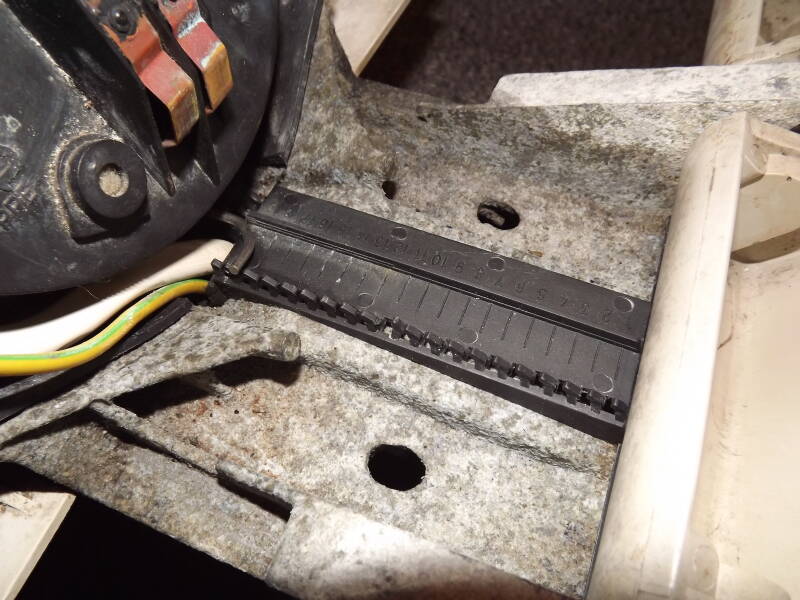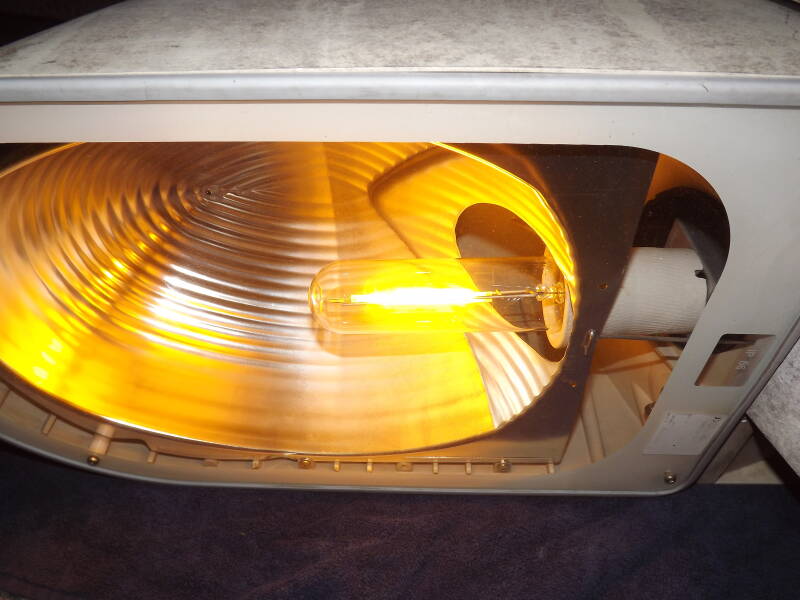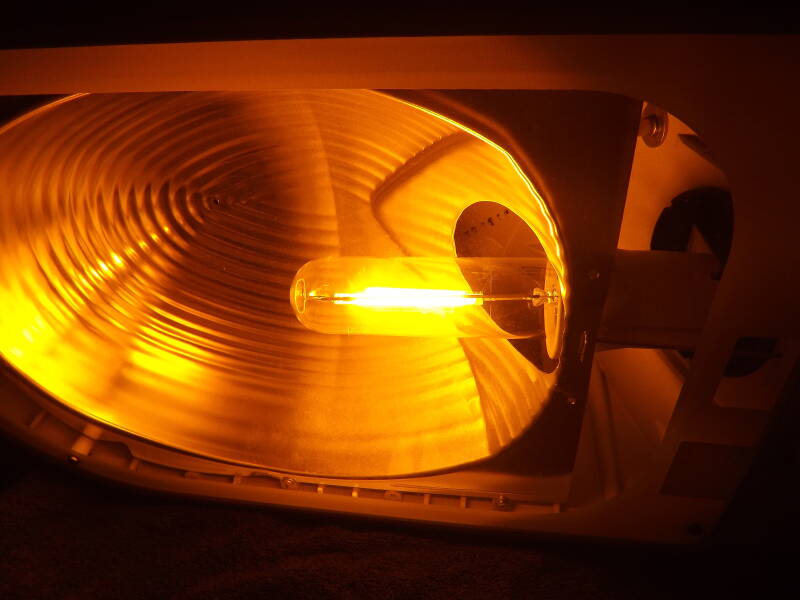My Collection: Philips SGS306 (Trafficvision)
| Manufacturer | Philips |
| Catalogue Number (model) | SGS306 SGE306 |
| Wattage | 150W |
| Lamp-Type | SON-T |
| Gear | Modified |
| Ballast | Philips DynaVision PROG Xt SON150 PE DVP Xt 4V SON150 |
| Photocell | Zodion SS6 |
| IP Rating (when new) | IP43 |
| Date Of Manufacture | ~~/02/2001 |
| Date On Photocell Socket | ~~/10/2000 |
| Date On Photocell | ~~/07/2018 |
| Date Acquired | 01/10/2023 |
| Restoration Status | Cleaned |
| Collection Number | #7 |
Philips' Trafficvision lantern was available in two sizes: the SGS305 (small) and SGS306 (large). This is the large version of the Trafficvision, the SGS306. When it arrived it came with a dead 150W SON ballast, fried ignitor and significant water damage. Consequently, these were removed and a new electronic ballast was installed in order to get the lantern going again.
The lantern came with a Zodion SS6 photocell (that had very rusty pins), a fried Philips SN 58 Ignitor, a Philips BSN 150L 324 Ballast and a Prelyo "MKBSM serie" Capacitor (Made in France, Dated January 2001). It's safe to say this lantern didn't work at the time, and stayed in as-received condition for months before the gear was removed and I could get around to cleaning the lantern.
A Closer view of the rusty ballast...
On the 26th February 2024, the lantern was completely disassembled and thoroughly cleaned after spending two months in a shed, but it is now proudly on display indoors.
The photocell's NEMA Socket has a date compass pointing to October 2000, with other date codes being found around the lantern going up to February 2001, likely when the lantern was assembled. New screws had to be implemented as the previous ones were rusted and seized. The socket and cell both remain as the photocell will be bypassed, and it's nice to let the lantern keep some of it's story.
The adjustable reflector was previously loose due to it's screws rusting and disintegrating, so I added new screws and washers to secure it. It can be moved to change light distribution depending on what type of road it is on.
For lamp changes, the lamp-holder can be removed entirely with a simple twist and pull motion, preventing the need to remove the flat glass bowl which is held on by four screws.. Some SGS306s can also have deeper polycarbonate bowls.
Due to the nature in which the lantern opens (the entire gear compartment is hinged) the SGS306 uses copper contact points rather than wiring to deliver power to the lamp. My Trafficvision also boasts something I haven't seen on any other yet, that is the SGE tag. I did some research but it came up empty. As it was manufactured in France, this could be the French product code for the SGS306, but I haven't found any evidence of the SGS306 being called the SGE306 anywhere. A B1 (February 2001) date code tells us when the lantern was likely assembled, and might have since been removed from French product catalogues, making it hard to find.
The lantern also has a rather interesting grub-screw set up, with a cross bar and two large bolts to tighten the lantern onto the column. This one looks to have been a post-top mount while it was in service!
On the 11th April 2024, fellow collector AgentHalogen_87 provided a 150W electronic SON ballast so that I could get this up and running once again! The ballast was installed and the lantern fired-up without protest! A working photocell was installed a few weeks later.















